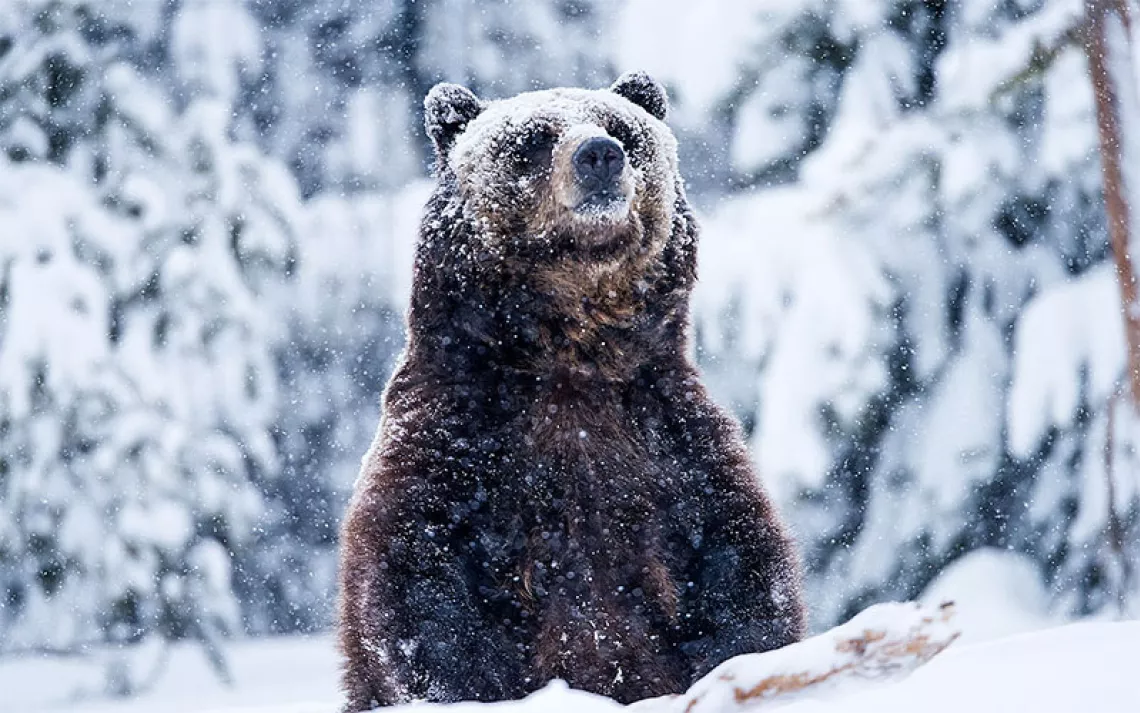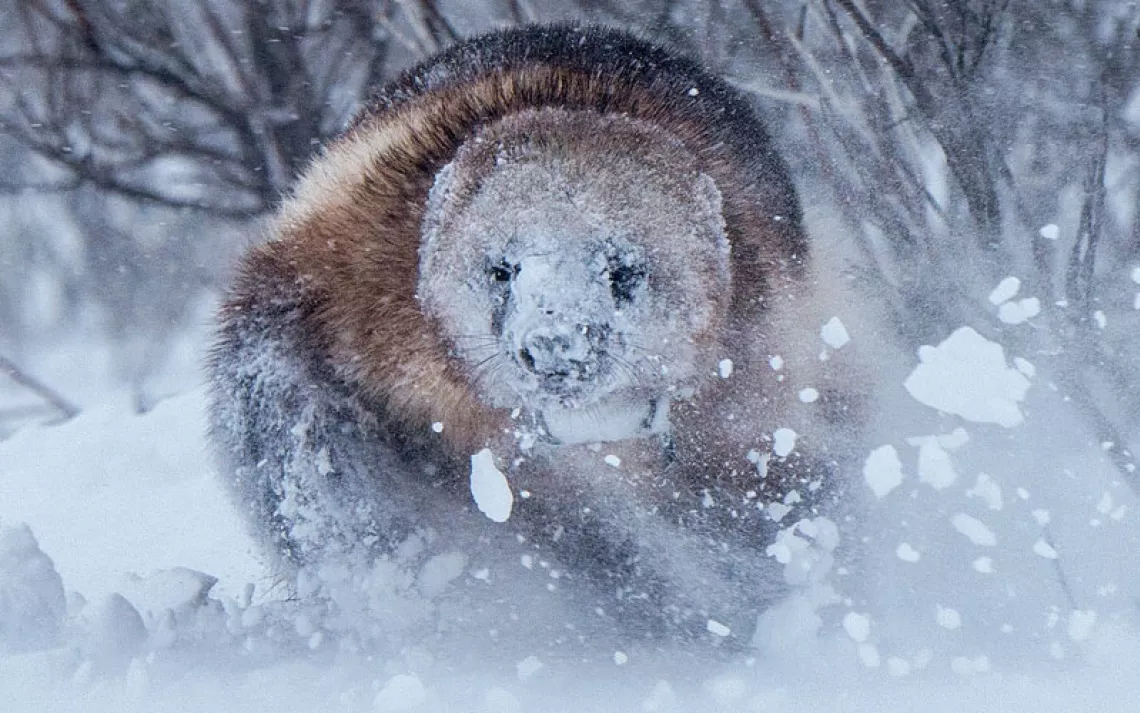A Bitter Pill to Swallow
China’s newly amended Wildlife Protection Law makes it easier to sell animal parts in traditional medicine

The drawers at The American College of Traditional Chinese Medicine at California Institute of Integral Studies. | Photo by Catherine Schuknecht
Chinese conservationists suffered a major setback on July 2 when China’s national legislature approved an amendment to the country’s 1989 Wildlife Protection Law that favors commercial farming. The newly approved revision, which will go into effect in 2017, was largely shaped by the animal-products industry, and will likely further legitimize farms that breed wildlife for commercial trade.
Commercial wildlife farms are big business in China. They exist in a legal gray area, with various legislative loopholes allowing them to operate under the radar. Close to 5,000 tigers and 10,000 bears are currently bred and raised so their parts can be sold for profit. Both species are valuable for medicinal products: Tiger bone and bear bile were historically used to treat certain ailments in traditional Chinese medicine, which accounts for roughly one-third of the country’s health care and medical services. Cruelty is rampant at the facilities, especially the bear farms, where the animals are kept in cramped quarters and subjected to painful bile extraction. Also, by stimulating consumer demand for tiger- and bear-based products, the farms create incentive for poaching, which has a much higher profit margin than farming.
Many conservationists fear the recent amendment to China’s wildlife law will make it even easier for farms to breed and trade wildlife. The revision does include a few positive changes, such as the prohibition of animal mistreatment. But it also allows captive breeding of endangered species based on a local permit certification system. Farmers can obtain approval from local governments to breed endangered species if the "sale, purchase, or utilization of [endangered] wildlife or the products thereof is necessary for scientific research, captive breeding, public exhibition or performances, heritage conservation, or other special purposes."While there are instances in which the central government protects endangered species—poaching a panda bear in China, for example, is subject to capital punishment—in most cases, whether or not a species should be protected will depend on the judgment of local officials.
The amendment also creates new loopholes for commercial exploitation. The law now states that the use of animal parts in commercial medicine should be subject to the laws and regulations of pharmaceutical management. “It’s like if the U.S. Fish and Wildlife Service went to the Food and Drug Administration and said, ‘Why don’t you guys take care of animals?’” explains Grace Ge Gabriel, the Asia regional director of the International Fund for Animal Welfare (IFAW). “You have a situation where nobody wants to take responsibility for the farms,” adds Peter J. Li, an associate professor of East Asian politics at the University of Houston-Downtown and China Specialist for Humane Society International.
Surveys show that Chinese consumers generally favor species conservation over wildlife trade and its products. One consumer survey revealed that 93 percent of urban Chinese residents believe that a ban on the trade of tiger parts is necessary to conserve wild tigers. Another study found that the majority of respondents think tiger farms should not be run as business enterprises and that farming should mainly be conducted for noncommercial purposes, such as conservation.
Attitudes toward the use of wildlife parts in traditional medicine have also changed in the last two decades. In 1993, tiger bone and rhino horn were officially banned from use in traditional Chinese medicine. Although bear bile was excluded from the ban, a 1998 IFAW survey indicated that most Chinese nationals do not support bear farming.
"When [traditional Chinese medicine] was first developed 3,000 years ago, you didn't have aspirin, surgery, or MRIs, but today you have all those things,” explains Lixin Huang, president of the American College of Traditional Chinese Medicine. “So there's just no point in drinking tiger wine or using those kinds of products; you have much better medical services.”
Also, plant and mineral alternatives to animal byproducts are abundantly available. Almost 90 percent of the roughly 3,000 medicinal substances used in traditional Chinese medicine are free of animal byproducts.
The shift away from wildlife products represents a serious threat to profitability in the animal products sector. According to Li, “Local governments that originally endorsed the farms don’t want to bail them out, but these people can’t get out of the farming business without sustaining a huge loss.”
China’s wildlife farming industry is responding with an aggressive push to undermine consumer attitudes and stimulate markets for their products—such as lobbying the national legislature to pass the new Wildlife Protection Law amendment, and launching marketing campaigns that confuse consumers.
“If a product is illegal, consumers don’t normally seek them out,” says Ge Gabriel, “[but] industry promotions confuse consumers, stimulating demand.” Many farms claim that they breed tigers for conservation, and that the money from purchases of tiger bone wine will go toward species protection. Some tiger farms are even disguised as safari parks and zoos.
Now that China’s wildlife law has had a pro-farming makeover, educating consumers may be the only way to curb the formidable economic power of the country’s animal products industry. Ge Gabriel has led IFAW’s global campaign to try to counter these techniques to confuse consumers. She hopes anti-wildlife product ads that the fund posted in subways and airports throughout China will help raise awareness about what consumers are buying. “Historically, [Chinese written] language was actually pictograms, so the word for tiger has a bone in the character, and the word for bear has the gall bladder in that character,” says Ge Gabriel. “In one of our ads, we have taken the tusk out of the word for elephant, the bone out of the word for tiger, and the gall bladder out of the word for bear, and we took away half of the character for human being. The ad is asking people, ‘If we mutilate animals this way, aren't we just beings without humanity?’”
 The Magazine of The Sierra Club
The Magazine of The Sierra Club



